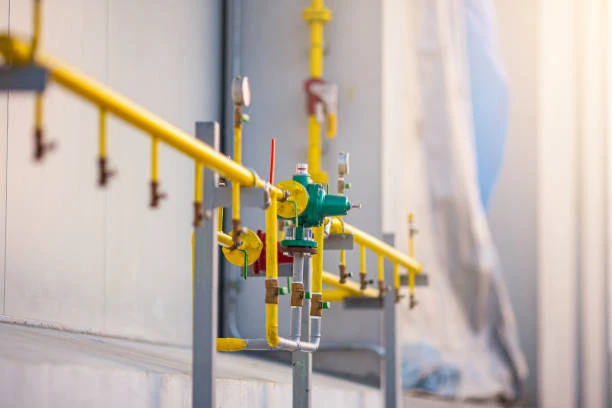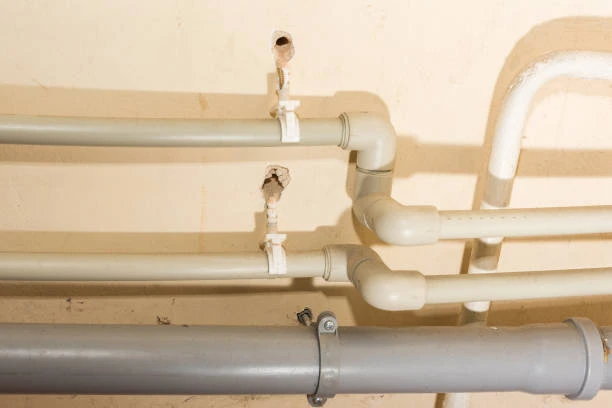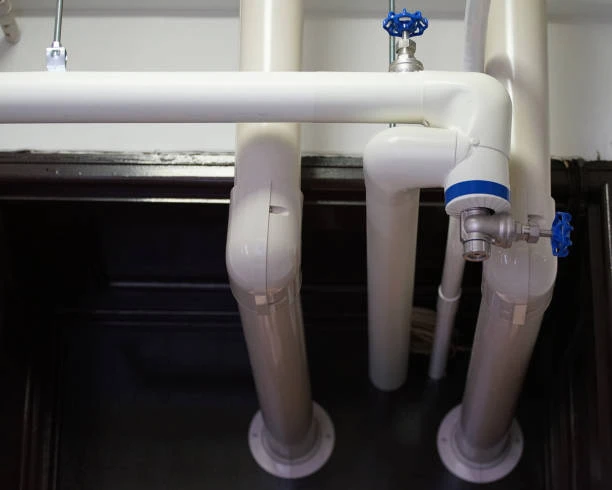Antistatic Properties: Applications of PEX Piping in Flammable Environments
Flammable environments, such as chemical processing facilities, refineries, and certain manufacturing plants, require careful attention to safety, especially regarding materials used in fluid and gas systems. In these settings, static electricity can pose a serious risk. This is where cross-linked polyethylene (PEX) piping, particularly systems featuring PEX expansion installation techniques and antistatic properties, becomes a valuable solution.
This article explores the role of PEX piping in reducing fire hazards, the relevance of antistatic design, and practical applications in flammable environments. It also discusses how to choose, install, and compare PEX systems with alternatives, ensuring maximum safety and compliance.
Frequently Asked Questions (FAQ)
1. Is PEX safe for use in flammable or hazardous environments?
Yes, when designed with antistatic additives or coatings and installed correctly, PEX piping can safely operate in flammable environments. It must be compliant with local safety regulations and standards.
2. What does “PEX expansion” mean?
PEX expansion refers to an installation method where the pipe end is expanded using a special tool to fit over a fitting. As the pipe contracts, it forms a secure, leak-resistant joint without glue or heat.
3. Does PEX generate static electricity?
Like all plastic materials, standard PEX can generate static. However, antistatic-treated PEX significantly reduces this risk, making it suitable for use near combustible materials.
4. Can PEX be grounded to prevent static discharge?
Yes. In many industrial setups, antistatic PEX systems are grounded or used with conductive fittings to minimise static build-up and ensure safety.
5. Where is antistatic PEX typically used?
It is commonly used in environments such as chemical plants, oil and gas facilities, paint manufacturing lines, and any location where flammable gases or liquids are present.
Definition and Characteristics of PEX Piping Systems
PEX (cross-linked polyethylene) is a thermoplastic material enhanced through a cross-linking process, improving strength, flexibility, and chemical resistance. PEX piping systems are widely used in plumbing, heating, and increasingly in industrial applications due to their unique properties.
Key Characteristics:
Flexibility: Easily bends around corners, reducing the need for fittings.
Chemical Resistance: Suitable for transporting aggressive or hazardous fluids.
Durability: Resistant to cracking, corrosion, and UV degradation (if rated for sunlight).
Temperature & Pressure Tolerance: Maintains performance in a broad range of conditions.
Antistatic Capability: Available with coatings or additives to reduce electrostatic discharge (ESD).
Systems using PEX expansion are known for creating strong, secure joints without relying on adhesives or metal fasteners, making them ideal for sealed environments.
Common Applications and Industries Using Antistatic PEX
Antistatic PEX piping is particularly useful where fire safety and fluid handling reliability intersect.
Key Industries:
Oil and Gas: Used for transporting non-flammable process water or coolants in refineries.
Chemical Manufacturing: Suitable for moving acids, bases, and other reactive substances.
Paint and Coating Production: Prevents electrostatic build-up that could ignite vapour.
Electronics Manufacturing: Used in cleanrooms to move gases and coolants with minimal contamination and static.
Aerospace Facilities: Handles fuel additives, hydraulic fluids, and compressed gases.
These environments require materials that do not add to the ignition risk. Antistatic PEX reduces ESD potential while maintaining efficient fluid or gas flow.
Buying Guide: What to Look for When Selecting PEX for Hazardous Zones
Not all PEX pipes are created equal, especially when safety is a top priority. Consider these factors when selecting PEX piping for flammable environments.
1. Material Type and Cross-Linking Method
PEX-A (peroxide method) is the most flexible and suited for PEX expansion installations. It also tends to recover its shape better than PEX-B or PEX-C.
2. Antistatic Treatment
Choose PEX piping specifically labelled as antistatic or ESD-safe. This could include:
Conductive inner or outer layers.
Antistatic additive compounds.
Carbon-black treated layers.
3. Certifications
Ensure the product meets safety standards, including:
ISO 21003 for multilayer piping systems.
ATEX compatibility in EU markets.
FM Global or UL ratings for industrial safety.
4. Colour Identification
Colour-coded PEX pipes are helpful for maintenance and risk management.
Black or grey: Often used for antistatic applications.
Red/blue: Typically for hot/cold water; avoid using these in hazardous settings.
5. Compatible Fittings and Tools
Use only manufacturer-approved fittings for PEX expansion, and ensure your expansion tool matches pipe diameter and wall thickness.
Installation Considerations: PEX Expansion in Flammable Environments
Proper installation is critical, particularly in settings where safety standards are strict. The PEX expansion method offers specific advantages here.
Step-by-Step Installation Notes:
1. Plan Routing Carefully
Avoid sharp bends, metal surfaces that could spark, or areas with high foot traffic. Ensure all pipes are shielded or marked if above ground.
2. Prepare the Pipe
Cut the PEX cleanly with a pipe cutter. Ensure the pipe end is round and free of debris before expansion.
3. Expand and Fit
Use a PEX expansion tool to expand the pipe. Quickly insert the fitting before the pipe contracts. This creates a tight, chemical-free seal.
4. Secure and Support
Install secure brackets with non-conductive clamps. Avoid metal-on-plastic friction where possible.
5. Ground the System (If Required)
In highly sensitive areas, ground the piping using specialised grounding clamps or bonding conductors.
6. Pressure and Leak Testing
Before final commissioning, test with inert gas or water under pressure. Monitor for at least 24 hours.
PEX Piping Systems vs. Other Piping Materials in Hazardous Environments
| Feature | Antistatic PEX Piping | Copper Pipe | Stainless Steel Pipe | PVC or CPVC Pipe |
|---|---|---|---|---|
| Flexibility | High | Low | Low | Low to Moderate |
| Static Resistance | High (when treated) | Naturally conductive | Naturally conductive | Low (non-conductive plastic) |
| Installation Complexity | Low | High (requires welding/soldering) | High | Moderate |
| Joint Strength | Excellent (with PEX expansion) | High | Very High | Moderate |
| Weight | Lightweight | Heavy | Heavy | Lightweight |
| Corrosion Resistance | High | Moderate | High | Moderate |
| Maintenance Need | Low | Moderate | Low | Moderate |
| Cost | Moderate | High | Very High | Low |
This comparison shows how PEX expansion systems with antistatic properties offer a balanced solution in cost, safety, and ease of installation.
Conclusion
In environments where flammable gases and fluids are present, safety comes first. Antistatic PEX piping systems, especially those using PEX expansion technology, provide a practical, durable, and safe solution. Their flexibility, chemical resistance, and minimal electrostatic build-up make them well-suited for use in hazardous zones such as chemical plants, refineries, and electronics manufacturing.
By selecting the right PEX material, using proper tools, and adhering to strict installation guidelines, engineers and safety managers can build reliable systems that minimise risk and maximise efficiency.
Contact Us
IFAN is a trusted Chinese manufacturer with over 30 years of experience in plastic pipes, fittings, and valves. Our PEX expansion systems and antistatic PEX products are ideal for safe operations in hazardous environments.
For more information,pls visit our webside https://waterpipefitting.com/
Pls Mailto: [email protected]
Whatsapp: +86 15088288323
Feel free to reach out with any questions. We respond to all emails or faxes within 24 hours. Let IFAN help you build safe, efficient, and sustainable piping systems for your industrial needs.














Recent Comments